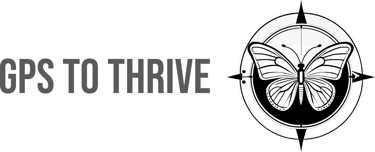From Pressure to Possibility: Befriending Uncertainty
Instead of picturing uncertainty as a cliff to jump off, imagine it as a safari to explore.
CREATIVE RESILIENCE
Liz Stubbs
9/2/20252 min read


I walked on set to direct a talent I was meeting for the first time.
They hadn’t read the script. They hadn’t glanced at the project brief. And they were visibly impatient, agitated about the day ahead.
I felt the weight: a lot was riding on this collaboration. Uncertainty buzzed in the air.
In that moment, I could have pushed. I could have lectured about preparation or insisted on diving into the script. Instead, I shifted gears. I told them my goal wasn’t to force them into the project—it was to support them in the ways they preferred, so they could shine their brightest. Then I asked one simple question.
Their shoulders dropped. The tension eased. Within minutes, we weren’t wrestling with each other; we were building together.
That moment reminds me: uncertainty doesn’t have to be a wall. It can be an opening.
Why Uncertainty Feels So Stressful
Our brains are wired to fear the unknown. In the wild, an unfamiliar sound could mean danger. Today, it’s an unclear brief, a vague deadline, or a last-minute change.
In fact, research shows our brains find not knowing more stressful than knowing something unpleasant.
But here’s the twist: uncertainty is also where growth, collaboration, and possibility live.
The Safari Shift: A New Metaphor
Instead of picturing uncertainty as a cliff to jump off, imagine it as a safari to explore.
On safari, you don’t sprint blindly into the wild. You scout. You listen. You take intentional steps. Curiosity is your compass.
That’s exactly how I navigated that film set—and it’s how you can navigate your own moments of “not knowing.
The Micro-Experiment Method
Here’s a simple 3-step practice for befriending uncertainty:
1. Observe (60 seconds)
Pause. Ask: What’s truly unclear here? What’s already solid?
Write a single sentence: “The part I don’t know yet is ___.”
2. Ask One Smart Question
Instead of solving everything, focus the fog.
Examples:
“What would make this 10% clearer?”
“What’s most important right now?”
“Who can I learn from here?”
3. Take a Micromove (2 minutes)
Do something so small it feels doable:
Send a clarifying message.
Draft one line.
Make one call.
Momentum starts in micromovements.
Bonus: Log the Learning
Keep a “Possibility Library” where you capture:
What I tried
What I noticed
Over time, this becomes your personal resilience playbook.
Why This Builds Creative Resilience
Each micro-experiment is a tiny rehearsal with the unknown.
Over time, your nervous system rewires: uncertainty shifts from pressure to possibility. Like on that film set, what could have spiraled into conflict became a collaboration.
Uncertainty stopped being a threat—and became a terrain we knew how to navigate.
Your Challenge
Today, pick one uncertain thing.
Run the micro-experiment:
1️⃣ Observe for 60s
2️⃣ Ask 1 smart question
3️⃣ Take 1 micromove
Then log what you discover.
You’re not leaping off a cliff—you’re building courage, clarity, and creative resilience, one safari step at a time.
✨ This post is part of the Creative Resilience pillar of GPS to Thrive—helping you navigate uncertainty with strength, curiosity, and innovation.
Empower
Transform your presence in life and work.
GPS to THRIVE
liz@gpstothrive.com
© 2025. All rights reserved.
